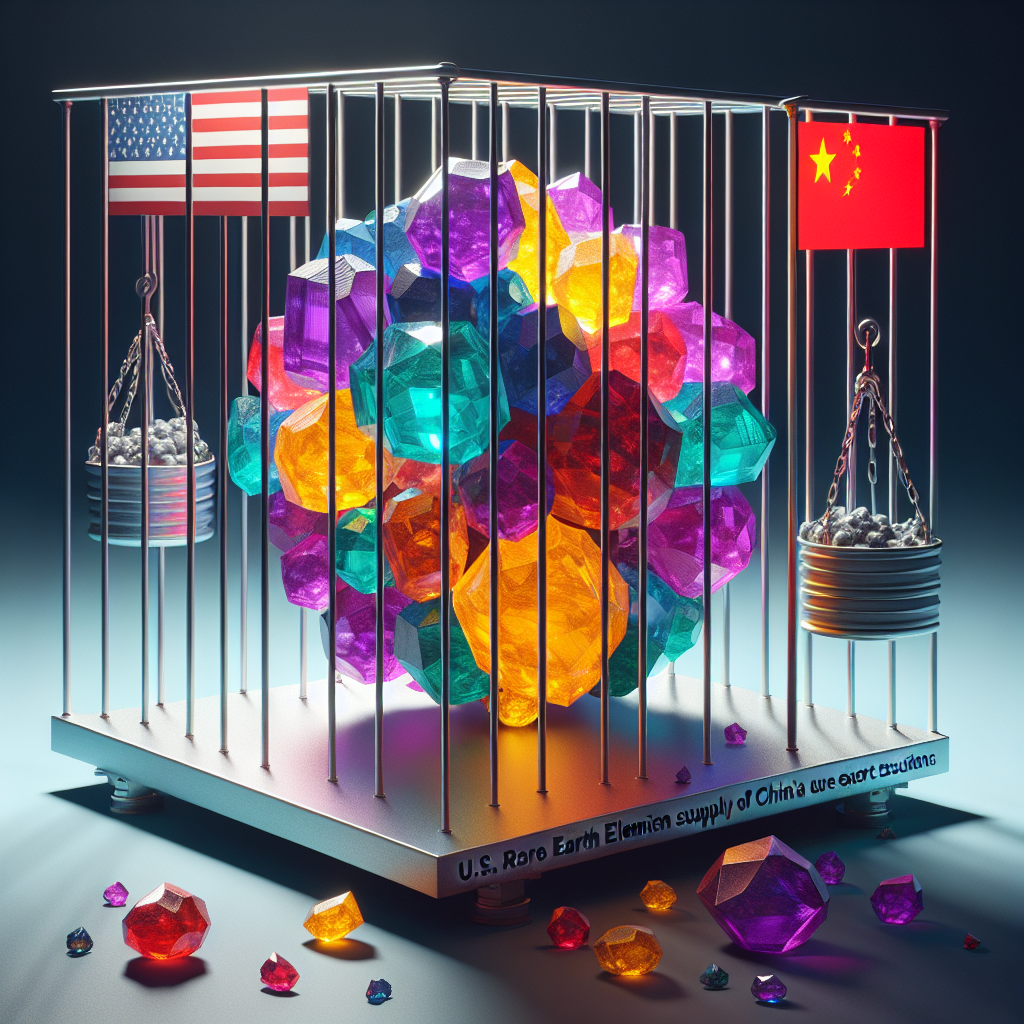Challenges for the U.S. in Sourcing Rare Earth Elements After China’s Export Restrictions
Recent developments have put the spotlight on the precarious situation surrounding the supply of rare earth elements (REEs) crucial for various industries. China’s recent export restrictions on seven key rare earth elements have not only raised alarms but have also highlighted the United States’ ineptitude in securing a reliable supply chain for these vital resources.
The Context of the Restrictions
As reported by Dow Jones, China has enacted export controls on seven rare earth elements: samarium, gadolinium, terbium, dysprosium, lutetium, scandium, and yttrium. According to Luisa Moreno, president of Defense Metals Corp., the U.S. currently relies on imports for almost all of these materials, generating virtually none internally. This reliance places the U.S. in a highly vulnerable position, particularly considering that China processes nearly 100% of heavy rare earths, which are more challenging to extract and refine.
Immediate Effects of China’s Export Controls
The immediate impacts of these export restrictions include a disruption in global supply chains, particularly for industries that depend on rare earths. Jena Santoro from Everstream Analytics points out that a short-term supply disruption is expected, with shipments stuck at Chinese ports while regulations are restructured. This situation is exacerbated by the lengthy licensing process that will delay export resumes, expected to take at least 45 days from April 13, 2025, before normal operations can begin.
Critical Applications of Rare Earths
Rare earth elements play an essential role in multiple technological and defense applications. They are vital for components in smartphones, electric vehicles, medical devices, and military technology. For instance, F-35 fighter jets require over 900 pounds of rare earth elements, while Virginia-class submarines need about 9,200 pounds. This dependence signifies the strategic importance of securing a domestic supply. Gracelin Baskaran from the Center for Strategic and International Studies adds that the gap in domestic production capabilities could lead to longstanding issues in U.S. defense readiness.
Broader Implications for U.S. Industries
The export controls are anticipated to have far-reaching consequences across various sectors. With a significant reliance on Chinese imports, the U.S. could see a spike in prices for a wide range of consumer products, including electric motors and wind turbines. Consumers will likely feel the impact through increased tariffs on Chinese goods, and defense budgets will probably face additional pressures as resources are redirected to secure rare earths.
Assessing the U.S. Response
The underlying question remains: how did the U.S. allow its reliance on foreign sources to reach this precarious level? Baskaran notes that we’ve had ample warning but have taken insufficient action. Moving forward, the U.S. must decisively increase investments in companies involved in the exploration and production of these crucial materials. The Mountain Pass Rare Earth Mine, currently the only active U.S. facility for rare earth mining and processing, handles less than 1% of the world’s rare earth production.
Long-Term Outlook and Strategies
According to experts, developing a viable U.S. supply chain for heavy rare earths could take anywhere from five to ten years, even under optimal circumstances. Investments into “upstream” industries, such as exploration and production, must accelerate to reduce future dependency on China. Furthermore, potential partnerships with companies in countries like Australia, which has its own rare earths production, could offer alternative sourcing options.
Conclusion: Emphasizing Urgency
U.S. policymakers must recognize the urgency of this situation. The rising tensions over rare earth elements underscore a broader failure to prepare for the ramifications of relying heavily on a single supplier. The Trump administration has acknowledged these challenges and is making efforts to formulate strategies, including exploring new sources of critical metals. However, any meaningful changes will take time, and the continuous threats posed by such restrictions could lead to increased manufacturing costs, impacting both consumers and defense spending.
In summary, the landscape of rare earth supply chains is in a state of flux, and with China’s export restrictions, the U.S. must adopt a pragmatic approach to strengthen its position in this crucial sector. The time for decisive action is now, lest the U.S. continue to find itself at the mercy of external forces vital for both its technological and national security needs.
